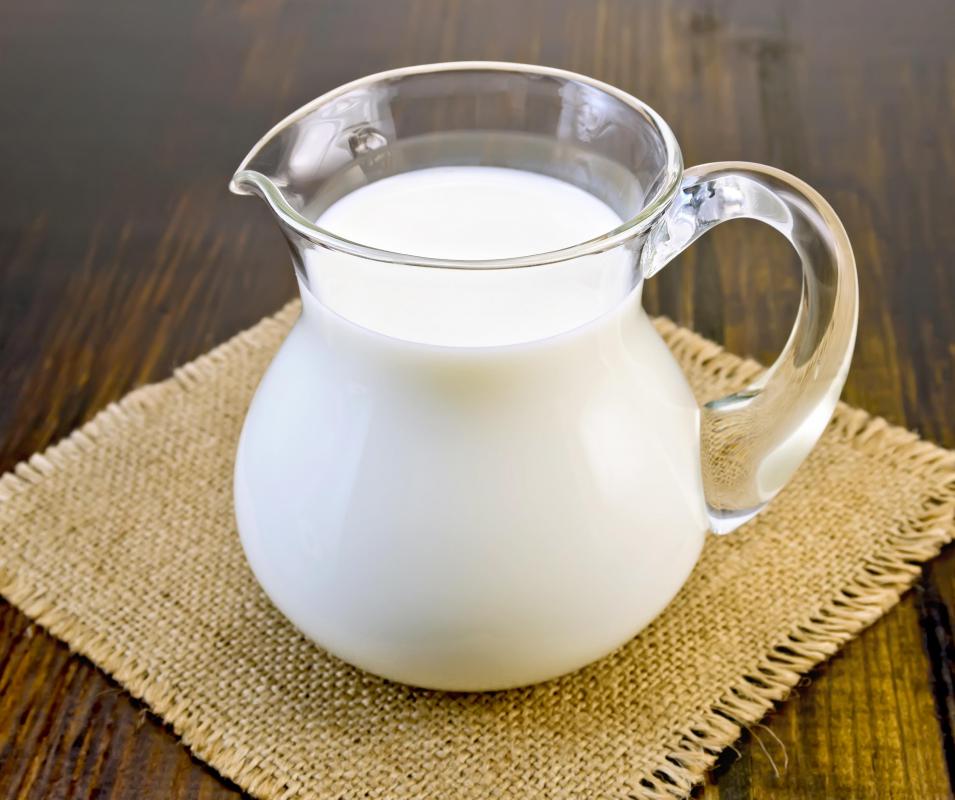At DelightedCooking, we're committed to delivering accurate, trustworthy information. Our expert-authored content is rigorously fact-checked and sourced from credible authorities. Discover how we uphold the highest standards in providing you with reliable knowledge.
What is Baked Cheese?
Baked cheese is a type of cheese which is oven-baked during the cheesemaking process to create a distinctive golden brown crust. The technique for making baked cheese originated in Scandinavia, where baked cheese is very popular in some regions. A growing push for artisan or unusual cheeses in other parts of the world raised consumer awareness and demand for baked cheese in the 1990s. The cheese is easier to find in some parts of the world than others, but it can be readily ordered from an assortment of suppliers for people who live in areas where baked cheese is not readily accessible.
To make baked cheese, the cheesemaker heats milk with rennet and bacterial cultures, forming cheese curds which are pressed into molds. The cheese is allowed to mature and harden before being baked at a high temperature. During baking, the natural sugars in the cheese are pulled to the surface, where they caramelize and form a crackly brown crust with an intense sweetness which pairs well with the buttery, rich interior of the cheese. Baked cheese has a long shelf life, and can be frozen for up to one year before use.

In Finland, baked cheese is called juustoleipa, which means “bread cheese,” a reference to the loaf-like appearance of the finished product. It is also found labeled as simply juusto, with many American producers marketing baked cheese as juusto. In Sweden, the cheese is called ostbröd.
Served cold, baked cheese goes very well with sweet jams and other sweetish cheeses. It can also be served warm with sweeteners or on a cheese platter, and will not melt when heated, although it does soften. The Finnish like to dip baked cheese in their coffee, and the cheese is also served with omelets and other breakfast foods. It also makes a very suitable standalone snack.

The cheese has almost 200 years of history and a small but devoted fan base. In some Scandinavian countries, baked cheese has traditionally been made with reindeer milk, since cows do not thrive in extreme conditions. Many companies have since transitioned to cow's milk for making baked cheese, although a few traditional producers still use reindeer milk. Cow's milk lends a more buttery, creamy flavor to baked cheese which can make it feel more decadent to eat.
AS FEATURED ON:
AS FEATURED ON:












Discussion Comments
@KoiwiGal - I don't think baked cheese (also called squeaky cheese) is all that different from other cheeses.
It doesn't take more than a few hours to mature from the recipes I've seen, although different people probably all have their own ways of making it.
At some point you bake it, while it is wrapped up, until the outside turns brown.
Once it's done, it will melt if you heat it, so maybe it is just the wrapping that keeps it together so it won't fall apart while baking.
It would be fascinating to learn how to make this cheese. I had not heard of it before.
I wonder how long the maturation process takes, and if the baking process can be used on other types of already made cheese, like if you baked some brie or something.
Is it the high temperature during baking that causes the cheese to brown rather than to melt? Or is it something different about the cheese itself?
I think this is the cheese that Heidi ate in the classic books. I always wondered why her grandfather baked the cheese before giving it to her, because, in my limited understanding of cheese at the time, I thought that would just make it melt everywhere. Those books always made it sound so delicious as well.
I will have to see if anywhere near here sells this kind of cheese and give it a try.
Post your comments